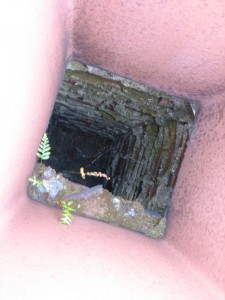While most homeowners are aware of how to operate and maintain their fireplaces, many are not familiar with the inner workings and components of their fireplace and chimney systems. One of the most important and least recognized parts of a chimney is the chimney liner.
What is a chimney liner?
A chimney liner is “A clay, ceramic, or metal conduit installed inside of a chimney, intended to contain the combustion products, direct them to the outside atmosphere, and protect the chimney walls from heat and corrosion.” Chimney liners have been recommended since the turn of the century, and almost all building codes require that homes have some form of chimney liner.
Types of chimney liners
There are three main types of chimney liners: clay, metal, or cast in place.
Clay: Clay chimney liners are the most common because they are the least expensive option. Available almost everywhere, clay liners are typically the best choice for normal fireplaces that receive regular maintenance.
Metal: Metal is usually recommended when homeowners are looking to upgrade or replace their existing chimney liner. Wood burning fireplaces typically require a stainless steel liner, while gas fireplace may use less expensive aluminum.
Cast in place: Cast in place liners are formed when a cement-like product is applied directly to the inside of the chimney structure. This creates a seamless liner that can help improve the structural integrity of aging fireplaces. In addition, cast in place liners are able to be used with both wood burning and gas fireplaces.
Purpose of chimney liners
The first and primary purpose of chimney liners is to prevent the transfer of heat from the chimney to nearby combustibles, such as framing, walls, or insulation. In tests conducted by the National Bureau of Standards, the woodwork surrounding chimneys without a liner caught fire in as little as three and a half hours.
The second purpose of chimney liners is to protect the masonry of the chimney structure. Wood burning fires create a number of acidic, corrosive byproducts that can eat away at the mortar joints of a chimney structure. If these joints are damaged, carbon monoxide and other dangerous gasses can easily seep into the living areas of a home instead of escaping safely up the chimney.
The final purpose of chimney liners is to direct the hot, sometimes toxic gasses from a fire out of the house and into the atmosphere. If a chimney liner is improperly fitted, these cannot be accomplished. A liner that is too small will allow gas and smoke back into the house, while a liner that is too large will not push smoke up the chimney fast enough, causing excessive buildup of creosote in the chimney. This can be dangerous as creosote is the leading cause of chimney fire.
The experts at Mason’s Chimney Service can help you find the chimney liner that fits both your home and your budget.

